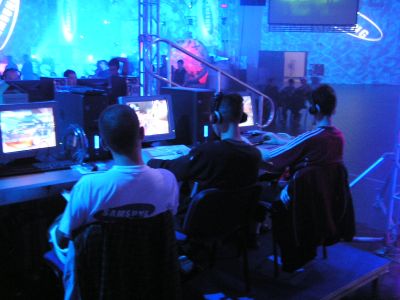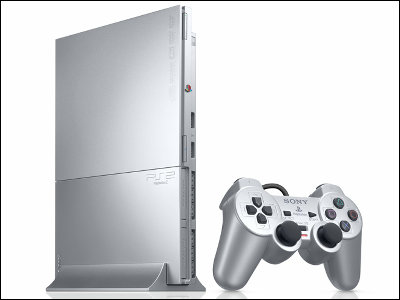Human rights organization GLAAD releases results of LGBTQ survey on gaming industry, including ``17% of active gamers are LGBTQ''

LGBTQ advocacy group GLAAD has released its first annual report examining LGBTQ representation in the video game industry. With this research report, GLAAD argues that ``the game industry should be more inclusive of LGBTQ people.''
2024 GLAAD Gaming Report: The State of LGBTQ Inclusion in Video Games | GLAAD
◆17% of active gamers are LGBTQ
According to GLAAD's survey of 1,452 American gamers who play PC or home game consoles, 17% of them identified as LGBTQ. The proportion of LGBTQ gamers is particularly high among young age groups, with 23-28% of gamers under 35 identifying themselves as LGBTQ. Based on this result, GLAAD expressed that 'one in five active gamers is LGBTQ.'

LGBTQ active gamers were on par with non-LGBTQ gamers in terms of average play time and money spent, but LGBTQ gamers were more likely to play on mobile platforms than non-LGBTQ gamers. LGBTQ gamers were also more likely to play on Nintendo Switch than non-LGBTQ gamers.

GLAAD said the reason for the tendency to play more Nintendo Switch is that ``the cost of entry is lower compared to other platforms, and the income of LGBTQ gamers in this study is relatively lower than that of non-LGBTQ gamers.'' He said he plans to investigate this further in future research.
On PC and consoles, LGBTQ gamers are more likely to play certain genres of games, such as open world, simulation, RPG, horror, and puzzle games, while non-LGBTQ gamers are more likely to play shooters. It turns out that. When it comes to mobile game genres, LGBTQ gamers are more likely to play puzzles, simulations, RPGs, and music/rhythm games, while non-LGBTQ gamers are more likely to play shooter games.

According to GLAAD, 72% of LGBTQ gamers say they feel good when they see characters that represent their gender identity or sexual orientation, and that percentage is even higher among younger age groups (ages 13-17). It is said that it will happen. Additionally, LGBTQ gamers are 1.4 times more likely than non-LGBTQ gamers to purchase or play a game because they can play as a character that matches their gender.
◆Increase or decrease in purchase intent due to the appearance of LGBTQ main characters in games
GLAAD's survey found that over 60% of non-LGBTQ gamers said that controlling an LGBTQ character in a game would not influence their purchasing or playing decisions. 'We found that having a game featuring an LGBTQ character as the main character makes no difference to the majority of non-LGBTQ gamers.' LGBTQ gamers are 4 to 5 times more likely than non-LGBTQ gamers to buy or play a game because they can play as an LGBTQ protagonist, demonstrating that the purchasing power of the LGBTQ community is greater than expected. Did.

◆Increase or decrease in purchase intent due to the appearance of LGBTQ sub-characters in the game
Regarding the question asking whether characters other than the characters that the player controls, such as so-called NPCs, are LGBTQ, the decrease in purchase intention by non-LGBTQ gamers was due to the question ``The main character is LGBTQ'' in the previous section. I felt relieved in comparison. Specifically, while 30% of the respondents answered, 'I would be less likely to buy or play a game if the main character is LGBTQ,' only 20% answered the same way when asked about secondary characters. Ta.
◆Emotions obtained through playing the game
Most gamers find enjoyment in being able to immerse themselves in a fictional world through games and experiencing the perspective of someone different from themselves. When we narrowed this down to LGBTQ gamers, we found that 13 percentage points were more likely to say ``I like being able to experience the perspective of someone different than myself'' compared to non-LGBTQ gamers.

◆Harassment in games
LGBTQ gamers are far less likely than non-LGBTQ gamers to feel 'welcomed in games,' with 52% feeling 'accepted by the community,' compared to 38%. % said they felt they had no place to belong. In contrast, 59% of non-LGBTQ gamers said they felt welcome, and only 24% said they had no place. Additionally, more LGBTQ gamers (61%) were uncomfortable using voice chat than non-LGBTQ gamers (40%).
◆Attitudes regarding LGBTQ in the game industry from an LGBTQ perspective
Recently, LGBTQ characters have appeared, and games that previously required you to choose your gender at the start of play are now starting to remove the concept of gender, and consideration of gender identity seems to be on the rise. I can feel it. A GLAAD survey found that 27% of LGBTQ gamers believe that game companies care about people like them, while 29% believe that game companies care about people like them. According to the results, they believe that 'no.'
◆LGBTQ employees at game companies
According to GLAAD, LGBTQ gamers also pay attention to the internal trends of game companies, with more than half (54%) of LGBTQ gamers saying, ``If I knew that a game was being developed by a company with many LGBTQ people, I would be more likely to play a game.'' ``They are more likely to buy or play the game.'' Additionally, 69% of LGBTQ gamers and 48% of non-LGBTQ gamers are less likely to buy or play a game from a company with a history of mistreating LGBTQ employees.
◆Current status of game content that includes LGBTQ content
The survey also looked at the number of games tagged as having LGBTQ content, and found that there were 146 games on Xbox, 90 on PlayStation, 50 on Nintendo Switch, and 2,302 on Steam. That's what he said. However, since these games account for only 2% of the total on home consoles and 2.5% of the total on Steam, GLAAD says that ``the gaming industry lags far behind other media industries in terms of the amount of LGBTQ representation.'' 'It's clear that the game industry is more accepting of LGBTQ people,' he said, calling for the gaming industry to become more accepting of LGBTQ people.
Related Posts:







